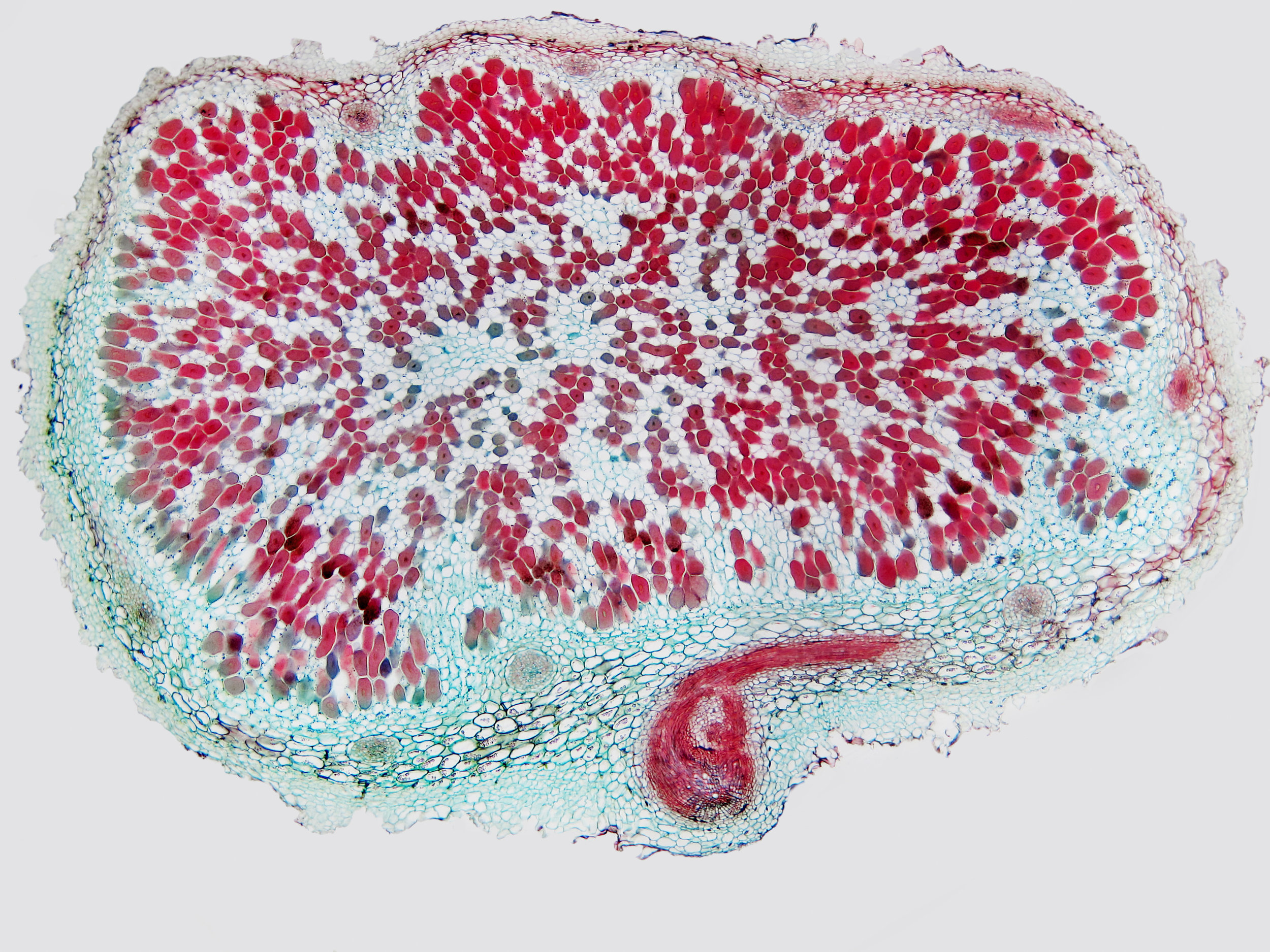Pictured is a cross-section of a root nodule produced by the nitrogen fixing bacteria rhizobium in symbiosis with a tree species from the Fabaceae family.
Prior to the formation of the first nodules (which host rhizobium bacteria) the host plant is alerted to the presence of the bacteria by the intracellular movement of calcium which ultimately triggers the formation of the first nodules.
Within the nodules is where the bacteria convert atmospheric nitrogen into biologically available nitrogen. Molybdenum is the trace element co-factor that is required to activate the nitrogenase enzyme pathway, without which N is not made biologically available.
The red coloring in the photo is leghemoglobin, the plant equivalent of hemoglobin and indicator of active N fixation. Cobalt is needed in sufficient supply for the synthesis of leghemoglobin. Nodules without a red or pink color inside signify a cobalt deficiency.
Calcium, cobalt, and molybdenum are three of the minerals we find most commonly out of balance. Minerals are as much a necessity for the basic functioning of microorganisms as they are for plants, animals and humans. It is our job to understand the nuanced relationships and foster the interconnectedness of the microbe/mineral/plant system.


